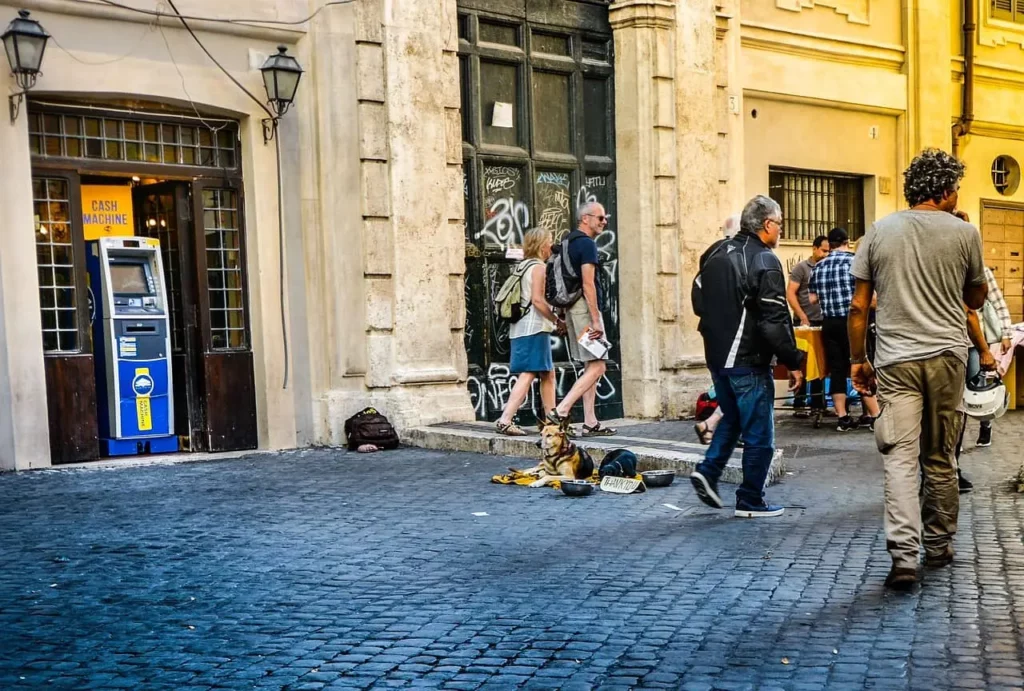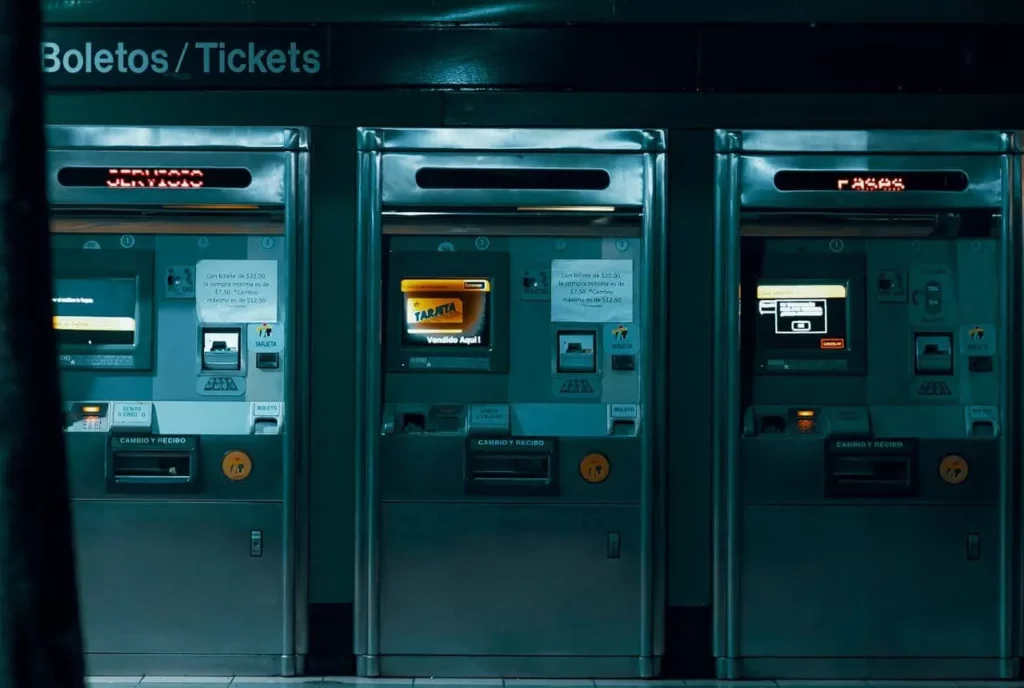You might be surprised by how common these types of scams have become in recent times. It’s startling how easy it is to fall victim to them without even realizing it.
Scams involving ATMs, Payment Terminals, Ticket Purchase Terminals, and Card Readers can be as deceptive as they are risky and financially damaging.
They don’t just target tourists and travelers, but anyone who uses these services. The locations, types of tampered machinery, techniques, devices, and styles may vary and evolve over time, but the objectives of the scammers remain largely the same.
Their goal is to intercept the payment data from the cards of unsuspecting victims when they attempt to make withdrawals or payments.
Risks for the victims can be significant. They include:
- Unauthorized transactions that can drain your bank account or rack up charges on your credit card. This could negatively impact your credit score if the unauthorized transactions go unnoticed.
- Identity theft that could have long-term impacts on your financial health.
- Exposure of personal information about your financial accounts and potential blackmailing, leading to broader privacy concerns.
You can check the Extras and Thoughts and the other ATM&Co Related Scams at the end to learn more about each scam.
For this article, we have opted to describe 6 “areas” of attention or intervention that could help you protect yourself or, at least, limit the damage. It goes without saying that all the proposed solutions are the result of experience and research, so do not take them as complete and absolute truths to avoid all scams but as a set of advice to limit the risks or potential losses.
1) Evaluate the Location, Its Surroundings and The Machine Itself
- Whenever possible, avoid isolated and poorly supervised places like those without video surveillance or in less frequented areas. Some banks, for safety reasons, have incorporated ATM machines inside the building in separate and video-monitored areas.
A machine located in isolated, less frequented areas with little or no surveillance is an easier target for tampering. - Pay attention to who owns the ATM: Is the ATM owned by a bank or financial institution, or is it one of the generic ones often found in tourist areas? Often, if the machine is owned by a known bank or financial institution, there is an expectation of a higher level of security and tamper-resistance. These organizations typically invest more in the security of their machines. However, this is not always the case, so it’s still important to be vigilant.
- Check the surroundings of the machine. In some ATM and Payment Terminals scams, criminals tend to lurk not far from the tampered machines. Some might try to interact with you to scam you or spy on your PIN, others will wait for you to leave to retrieve the data, the card, or the stolen cash.

2) Inspect the Machine and Pay Attention to Details
- Inspect the Card Slot and test its solidity. Does it feel secure, or does it come away easily? Look inside the slot to see if there’s anything unusual there. Scammers sometimes insert devices into the slot to read your card information.
- Check the Keypad: Pay particular attention to the keypad. Are there any openings or signs that indicate it might be a detached part? Fraudsters may place a fake keypad over the original to capture your PIN.
- Look for Hidden Cameras. These could be located in crevices or apparent damages in the upper part of the cover. Scammers use these cameras to record you entering your PIN.
- Assess the Entire Cover: In rare cases, the entire cover of the ATM or payment terminal might be a fake placed over the original. This is a more sophisticated scam where the fake cover can house various devices to skim your card and capture your PIN. If the ATM or payment terminal looks different or too odd compared to others you’ve used, it might be best to find another machine.

3) Protect Your Session and Be Aware of Your Surroundings
- Be wary of Strangers: Do not trust anyone who tries to approach you or get closer while you are using an ATM. People should know that this is a sensitive situation, and there’s no reason for them to approach unless they are warning you not to use the machine you are operating.
- Make sure to cover the keypad and your hand while typing your PIN. This should protect you from prying eyes and possible hidden cameras, but not from fake keypads installed to record the users’ PINs.
4) Leverage Technologies and Services
Offered by your Bank, other Financial Institutions, or the Market.
- Use One-Time Codes (OTC) via token or SMS and request in-App confirmation for online transactions. This can help secure them and prevent unauthorized uses of your funds.
- In-App payments and Virtual Cards: In addition to in-app payments with QR codes, some services also offer single-use or time-limited virtual cards for contactless payments. These tools can provide an extra layer of security by keeping your actual card details hidden from Hacked Card Readers. You can find more information about this scam here.
- Consider using credit cards that offer insurance in case of fraud. This should provide a possibility of recovering at least something in case of scams

5) Use Common Sense
- Set spending limits, based on your needs, for contactless and PINless purchases and online transactions without double verification (SMS/app or token OTC). This will help limit potential damage in case of a breach in your payment data or stolen card.
- When traveling abroad, keep a reasonable supply of cash in the local currency for your needs. But, especially in some areas, don’t carry too much to avoid attracting unwanted attention. Get used to the local currency and its value to avoid fake bills scams and tourist traps. If you plan to move away from purely urban and modern areas, try to anticipate how much cash you will need to avoid using ATMs for withdrawal or Payment Systems in too remote, isolated, or concerning places.
- If you’re not sure about the operation of an ATM or payment terminal, ask around if it works properly. But don’t necessarily blindly trust the first positive response and seek confirmation from more people if you can.
- Consider using a dedicated card for daily expenses, online purchases, and travels. Possibly linked to a separate account from your main finances.
If it’s a debit one, prepaid, with zero/low recharge costs, and can operate within the major globally recognized payment card networks (Visa and/or MasterCard), it’s almost the perfect choice. Remember though that a lot of services usually require a credit card for payments.
6) Monitor Your Accounts and All Transactions
Although it’s technically related to the previous two points, this sixth one is dedicated to monitoring. As simple and obvious as it may seem, it’s a crucial habit to promptly detect any irregularities or breaches of our payment data or funds.
- Set in-App, SMS, or e-mail alerts for every transaction. Even better, set up in-app authorizations for transactions and payments. However, be aware that this might not be foolproof and could potentially be circumvented by other IT scams or hacking methods.
- Regularly Monitor Your Accounts and Fund Movements: In case you spot any irregularities, investigate the issue with your bank or financial institution and take action to prevent further losses.

+ 1) Stay Informed
- Understanding the nature of existing scams and how they work can be your first line of defense against them. If you’re interested in learning more, in ATM&Co Related Scams below you will find a list of topics specifically covering ATM, Payment Terminals, TVM and Card Readers Scams.
Remember: the more you know, the better.
ATM&Co Related Scams

Extras And Thoughts
We’ve tried to summarize all the advice, stories, and best practices we’ve gathered through research and our experiences on how to protect yourself from or limit the damage of scams related to interactions with tampered or hacked ATMs, Payment Terminals, TVMs, or Card Readers.
However, these are not the only sources of risk for your funds and payment data. Unprotected Wi-Fi, Phishing, Fake or Clone Sites are just a few of the “non-physical” methods commonly used to steal your payment coordinates, and not only, and do not require your interaction with the aforementioned machines.
In these cases, monitoring your accounts and transactions still remains a valid strategy to at least limit the damage.
If you have ideas or solutions or other information regarding this type of scams that are not already present in this post, please, let us know.
Content Disclaimer
All images are licensed under CC0, CC BY, or CC BY-SA and belong to their respective authors.
